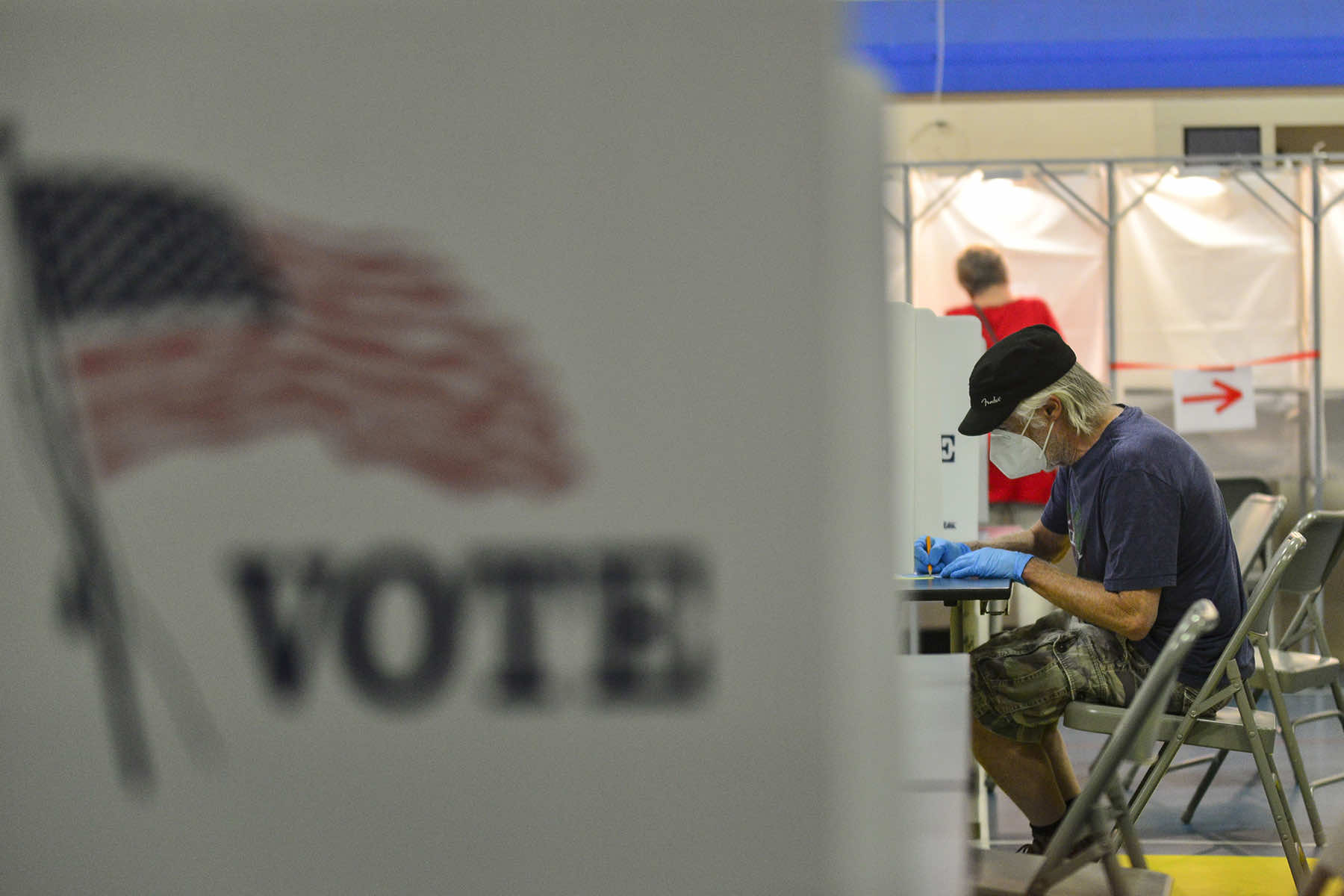
A key fight over democracy is currently taking place in Wisconsin. On April 4, voters in the state will choose a new judge for Wisconsin’s Supreme Court. That judge will determine the seven-person court’s majority, a majority that will either uphold or possibly strike down the state’s gerrymandered voting maps that are so heavily weighted toward Republicans as to make it virtually impossible for Democrats to win control of the legislature.
Political scientists judge Wisconsin to be the most gerrymandered state in the country. The state is divided pretty evenly between Democrats and Republicans, although the Democrats have won 13 of the past 16 statewide elections. But despite the state’s relatively even political split, the current district maps are so heavily tilted for Republicans that Democrats have to win the statewide vote by 12 points just to get a majority in the assembly: 50 of the 99 seats. Republicans, though, can win a majority with just 44% of the vote.
The process of changing Wisconsin into a stronghold of Republican power began in the 2010 elections, when Republicans launched Operation REDMAP to take over state legislatures before the redistricting process based on the 2010 census began. That year, the billionaire brothers Charles G. and David H. Koch pumped money into Wisconsin. Along with a strong talk radio media ecosystem, they helped to elect Governor Scott Walker to curb the power of public sector unions, which they blamed for what they considered excessive state spending.
The election of Governor Walker and a Republican legislature began the process of taking control of the state. Using granular voting data and sophisticated mapping software, the Republicans gerrymandered the state so severely that they retained control of the assembly going forward even though Democrats won significantly more votes.
As Ari Berman explained in Mother Jones, Republicans used that power to take away the bargaining rights of public sector unions in order to defund and demoralize one of the Democratic Party’s core constituencies. Berman quotes right-wing strategist Grover Norquist, who wrote that the Wisconsin policies were a national model. “If Act 10 is enacted in a dozen more states, the modern Democratic Party will cease to be a competitive power in American politics…. It’s that big a deal.” The assembly also passed at least 33 new laws during the Walker years to change election procedures and make it harder to vote.
When Democrat Tony Evers won election as governor in 2018, Democrats won all four statewide races. They also won 53% of the votes for state assembly — 203,000 more votes than the Republicans did — but because of gerrymandering, the Democrats got just 36% of the seats in the legislature. The Republicans there immediately held a lame duck session and stripped powers from Evers and Democratic attorney general Josh Kaul. Then they passed new laws to restrict voting rights. The legislature went on to block Evers’s appointees and block his legislative priorities, like healthcare, schools, and roads.
Polls showed that voters opposed the lame duck session by a margin of almost 2 to 1, and by 2020, 82% of Wisconsin voters had passed referenda calling for fair district maps.
But when it came time to redistrict after the 2020 census, the Republican-dominated legislature carved up the state into an even more pro-Republican map than it had put into place before. Ultimately, the new maps gave Republicans 63 out of 99 seats in the assembly and 22 out of 23 in the state senate. They came within two assembly seats of having a supermajority that would enable them to override any vetoes by the governor, essentially nullifying him, although Evers had been reelected by 53.5% of the vote – a large margin for Wisconsin.
With gerrymandered districts virtually guaranteeing their reelection, Republicans are insulated from popular opinion. In the 2021–2022 session, they ignored the governor, refusing to confirm Evers’s appointees and going nearly 300 days without passing a single bill.
They also ignored popular measures, refusing to let 98% of Democratic bills even be heard and refusing to address gun safety issues — although 81% of Wisconsinites wanted background checks for gun sales — or abortion rights, even though 83% of Wisconsin residents wanted at least some abortion rights protected after the Supreme Court’s overturning of Roe v. Wade last June put back into effect a law from 1849.
This radicalized Wisconsin assembly also mattered nationally when it became a centerpiece of Trump’s attempt to overturn the 2020 presidential election. Nearly 75% of the Republicans in it worked to cast doubt on that election. After an audit turned up “absolutely no evidence of election fraud” — according to a Wisconsin judge — they tried to take control of elections away from a bipartisan commission and turn it over to the legislature they control.
Senator Ron Johnson led the effort, calling for Republicans to take control of the elections because, he said, Democrats can’t be expected to “follow the rules.” In the 2022 election, the Trump-endorsed Republican candidate for governor, Tim Michels, promised, “Republicans will never lose another election in Wisconsin after I’m elected governor.”
Their effort failed only because they fell two seats shy of the supermajority they needed.
By shaping the state maps and limiting the power of Democratic constituencies, Republicans have also taken control of the state supreme court, which sides with the Republican lawmakers’ attempts to cement their own power. Now voters have the chance to shift the makeup of that court. Doing so would make it possible that new challenges to the gerrymandered maps would succeed, returning fairness to the electoral system.
Wisconsin journalist Dan Shafer, who writes The Recombobulation Area, is following the race closely. His coverage reveals how the candidates’ framing of the election mirrors a larger debate about democracy. Theoretically, the election is nonpartisan, but Republicans paid former state supreme court justice Dan Kelly $120,000 to consult on Trump’s false elector scheme to overturn the 2020 presidential election, and he was on the payroll of the Republican National Committee until last December. In 2012 he defended the Republicans’ gerrymandered maps in court.
For her part, Milwaukee County judge Janet Protasiewicz has made it clear she opposes the gerrymandered maps. “Let’s be clear here: The maps are rigged. Absolutely positively rigged,” she said in a candidates’ forum in January. “They do not reflect the people in the state. They do not reflect accurate representation, either in the State Assembly or the State Senate. They are rigged, period. I don’t think it would sell to any reasonable person that the maps are fair.”
Shafer noted that supreme court terms are for ten years, so if the court does not shift in this election, it, along with the gerrymandered maps, will remain in place “for the foreseeable future.” The race ultimately comes down to checks and balances, he says. The court has not checked the legislature, which has entrenched one-party rule in Wisconsin.
“This isn’t to say the maps should be redrawn to instead benefit Democrats,” Shafer continued. “Far from it. It’s about fairness. Some years Democrats will win a majority, other years Republicans will win a majority. If one party isn’t doing their job, voters should be able to do something about it. It’s about crafting a system that reflects the people of Wisconsin and can be responsive to the state’s voters. We don’t have that right now. And that has to be the goal.”
Kristopher Radder (AP)
Letters from an Аmerican is a daily email newsletter written by Heather Cox Richardson, about the history behind today’s politics














